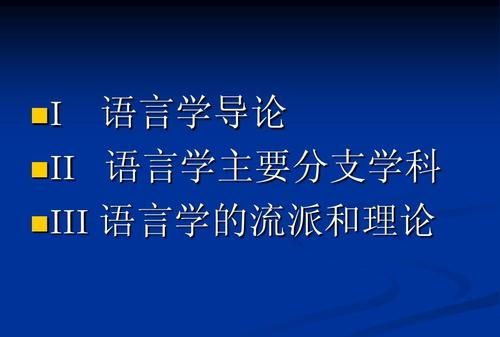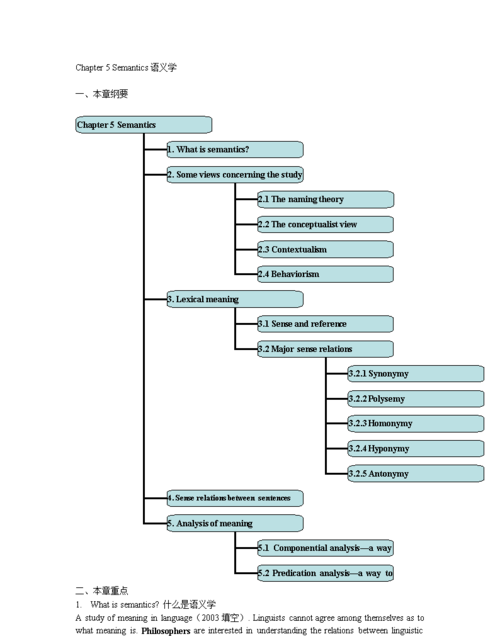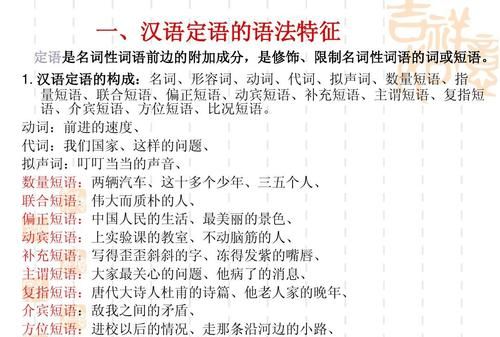本文目录
英语语言学考研院校排名
名词修饰名词。
形容词修饰名词,副词修饰名词,代词修饰名词,冠词修饰名词。
英语语言学是英语语言文学专业培养计划中的一门基础必修课,其重要性不言而喻。该课程的目标包括系统传授现代语言学知识、提高学生英语学习能力、激发学生对从事语言研究的兴趣,培养学生的创新能力等。

英语语言学的核心是什么
语言学是对语言的系统研究,对于一个学习英语的人来说,应该懂一点语言学的知识,它可以在理论上对学习语言有指导作用,有助于更好的学习语言,下面介绍一点语言学知识.
I. Introduction
1. What is Language
Language is a system of arbitrary vocal symbols used for human communication.
2. What is Linguistics(语言学)
Linguistics is the scientific study of language.
3.Some Basic Distinctions(区分) in Linguistics
3.1 Speech and Writing
One general principle(原则) of linguistic analysis is the primacy of speech over writing. Writing gives language new scope(范畴) and uses that speech does not have.
3.2 Descriptive(描述性) or Prescriptive(说明性)
A linguistic study is descriptive if it describes and analyses facts observed; it is prescriptive if it tries to lay down rules for "correct" behavior.
3.3 Synchronic(共时) and Diachronic(历时) Studies
The description of a language at some point in time is a synchronic study and The description of a language as it changes through time is a diachronic study.
3.4 Langue(语言) and Parole(言语)
This is a distinction made by the Swiss linguist F.De Saussure (索绪尔)early last century. langue refers to the abstract linguistic system shared by all the members of a speech community and parole refers to the actualized(实际的) language, or realization of langue.
3.5 Competence(能力)and Performance(行为)
Competence is the ideal language user's knowledge of the rules of his language. Performance is the actual realization of this knowledge in utterances(发声).
4.The Scope of Linguistics
General linguistics is the study of language as a whole.
Phonetics(语音学) is the branch of linguistics which studies the characteristics of speech sounds and provides methods for their description, classification and transcription.
Phonology(音韵学) is the branch of linguistics which studies the sound patterns of languages.
Morphology(词法) is the branch of linguistics which studies the form of words.
Syntax(句法) is the branch of linguistics which studies the rules governing the combination of words into sentences.
Semantics(语义学) is the branch of linguistics which studies the meaning of language.
Applied linguistics(应用语言学) is the study of the teaching of foreign and second languages.
Sociolinguistics is the study of the relationship between language and society.
Psycholinguistics is the study of the relationship between language and the mind.
Historical Linguistics(历史语言学) is the study of language changes.
Anthropological linguistics(人文语言学) uses the theories and methods of anthropology to study language variation and language use in relation to the cultural patterns and beliefs of man.
Neurolinguistics(神经语言学) studies the neurological basis of language development and use in human beings.
Mathematical linguistics(数学语言学) studies the mathematical features of language, often employing models and concepts of mathematics.
Computational linguistics(计算语言学) is an approach to linguistics in which mathematical techniques and concepts(概念) are applied, often with the aid of a computer.
II. Phonetics(语音学)
1. scope of phonetics
Speech sounds may be studied from different angles, thus we have at least three branches of phonetics:
Articulatory phonetics(发音语音学)we may examine the way in which a speech sound is produced to discover which vocal organs are involved and how they coordinate(协调) in the process.
Auditory phonetics (听觉语音学)we may look into the impression a speaker makes on the hearer as mediated(调节) by the ear, the auditory nerve(神经) and the brain.
Acoustic phonetics (声学语音学) we study the physical properties of speech sounds, as transmitted(传送) between mouth and ear.
2. The vocal organs
The vocal organs may be viewed as consisting of three parts, the initiator of the air-stream,(气流发生器官) the producer of voice(声音发生器官) and the resonating cavities.(声音共振器官)
3. Consonants(辅音)
Places of articulation(发音部位): bilabial,(双唇) Labiodentals,(唇齿) dental,(齿) alveolar,(齿龈) retroflex,(卷舌) palate-alveolar,(上齿龈) palatal,(上颚) velar,(软腭) uvular,(小舌) glottal(声门)
Manners of articulation: plosive,(暴破) nasal,(鼻音) trill,(颤音) lateral,(边音) fricative,(摩擦) approximant,(近似音) affricate(破擦)
4. Vowels (元音)
The classification of vowels: the height of tongue raising (high, mid, low), the position of the highest part of the tongue(front, central, back), and the degree of lip rounding(rounded, unrounded)
III. Phonology(音韵学)
1. phonemes(音素):a distinctive(有区别的) sound in a language.
2. Allophones(音位变体):The nondistinctive sounds are members of the same phoneme.
3. Minimal pairs(最小对立体): word forms which differ from each other only by one sound.
4. Free variation (自由变异):If two sounds occurring in the same environment(环境), they does not produce a different word form, but merely a different pronunciation of the same word.
5. Complementary distribution(补充分类):Not all the speech sounds occur in the same environment. When two sounds never occur in the same environment
6.Suprasegmental phonology(超音段音位):the study of phonological properties(性质) of units lager than the segment-phoneme. They are syllable(音节), stress,(重音) word stress, sentence stress. pitch (音调)and intonation(语调).
IV. Morphology(词法)
1. inflection(构形法):the grammatical relationships through the addition of inflectional affixes.(屈折词缀)
2. Word-formation(构词):the processes(过程) of word variations signaling lexical relationships.(表明词法关系) They are compound(合成)and derivation (派生).
3. Morpheme(词素): the smallest unit in terms of relationship between expression and content.
4. Allomorph(同质异象变体): some morphemes have considerable variation, for instance, alternate shapes or phonetic forms.
5. Types of morphemes: They are roots,(词根) affix(词缀) and stem(词干).
6. Lexicon(语言词汇):in its most general sense, is synonymous with vocabulary.
7. Closed-class words(封闭性) and open-class words(开放性):the former whose membership is fixed or limited and the latter whose membership is in principle(实际上) indefinite or unlimited.
8. Word class(词性):It displays a wider range of more precisely defined classes.
9. Lexeme(词位):the smallest unit in the meaning system of a language that can be distinguished from other smaller units.
10. Idiom(习语,成语):Most phrasal lexemes are idioms. It is especially true for a sequence of words(词序) which is semantically(语义上) and often syntactically(句法上) restricted.(限制)
11. Collocation(搭配): the habitual(习惯的) co-occurrences (同时出现)of individual lexical items.
V. Syntax (句法)
1. Positional relation or word order(词序):the sequential(顺序) arrangement of words in a language.
2. Construction or constituent (句子结构): the overall process of internal (内部)organization of a grammatical unit .
3. Syntactic function(句法功能): the relationship between a linguistic form and other parts of the linguistic pattern in which it is used. The names of functions are expressed in terms of subjects, objects, predicates, modifiers,(修饰语) complements(补语), etc.
4. Category(范畴):It refers to classes and functions in its narrow sense, e.g. noun, verb, subject, predicate, noun phrase, verb phrase, etc. The categories of the noun include number, gender, case and countability.
5. Phrase: a single element of structure containing more than one word, and lacking the subject-predicate structure typical of clause.
6. Clause: a group of words with its own subject and predicate, if it is included in a larger sentence.
7. Sentence: It is the minimum part of language that expresses a complete thought.
VI. Semantics
1. Conceptualism or mentalism (概念主义):Following F. De Saussure(索学尔)'s "sign" theory, the linguistic sign is said to consist of a signifier (所指)and signified(被指), i.e., a sound image and a concept, liked by a psychological(心理的) "associative" bond.(相关联系)
2. Mechanism(机械主义):Some linguists, Bloomfield,(布鲁费尔德) for example, turned to science to counter(反)-act the precious theories and this leads to what call the mechanistic approach(方法). The nature of this theory has nothing to do with the scientific study of mental phenomena.(智力现象)
3. Contextualism (语境主义):It is based on the presumption(假定) that one can derive meaning from or reduce it to observable context.
4. Behaviorism (行为主义):Behaviourists attempt to define (定义)the meaning of a language form as "the situation(情景) in which the speaker utters(说话) it and the response(反应) it calls forth in the hearer."
5. functionalism (功能主义):Functionalists as represented (代表)by the Prague school(布拉格学派) linguists and neo-Firthian (新弗斯)linguists, approach the problem from an entirely new orientation(方法). They argue(争辩) that meaning could only be interpreted(解释) from its use or function in social life.
6. Sense relationships: While reference deals with the relationship between the linguistic elements, words, sentences, etc.,and the non-linguistic world of experience, sense relates to the complex system of relationships that hold between the linguistic elements themselves. They include synonymy(同义词),antonymy(反义词),hyponymy(下层次)Polysemy(一词多义)and Homonymy (同音异义词)
7. Semantic analysis: It includes 1) componential(成分) analysis which defines the meaning of a lexical element in terms of semantic components.(意义成分)2) predication (表述)analysis in which the meaning of a sentence is not merely the sum of the meanings of the words which compose it. 3) relational components in which the semantic analysis of some words presents a complicated picture, because they show relations between two and perhaps more terms.
VII. Language Variation (语言变化)
1. Lexical change(词汇的变化):changes in lexis.
2. Invention: (新造词)new entities.
3. Compounding:(合成词)New words are sometimes constructed by combining two old words.
4. Blending: (混合词):It is a relatively complex form of compounding, in which two roots are blended by joining the initial part of the first root and the final part of the second root, or by joining the initial parts of the two roots.
5. Abbreviation or clipping:(缩写)A new word is created by cutting the final part or cutting the initial part.
6. acronym:(取首字母的缩写词)It is made up from the first letters of the name of an organization, which has a heavily modified (修饰) headword.
7. Metanalysis:(再分化)It refers to a process through which a division is made where there were note before.
8. Back-formation:(逆构词) It refers to an abnormal(非正常) type of word-formation where a shorter word is derived by deleting(去掉) an imagined affix from a longer form already present in the language.
9. Analogical creation:(类比造词)It can account for(说明) the co-existence of two forms, regular and irregular, in the conjugation(结合) of some English verbs.
10. Borrowing(借用):English in its development has managed to widen her vocabulary by borrowing words from other languages.
11. Phonological change(音变):It is related to language variation in the phonological system of language. It includes loss,(省音) addition,(加音) assimilation,( 同化)dissimilation.(异化)
12. Grammatical change: Changes in both morphology(词法) and syntax(句法) are listed under this heading.
13. Semantic change:(语义变化)It includes broadening,(语义扩大) narrowing,(语义缩小) meaning shift,(意义转化) class shift(词性转换) and folk etymology.(词源变化)
14. Orthographic change :(正字法)Changes can also be found at the graphetic level.

英语中副词可以修饰名词吗?-知乎问答
1. 问题概述
在关于英语副词能否修饰名词或名词对等词的问题上, 英语语法界存在两种观点,并各自举了一些例子加在佐证:一观点种认为,副词可以修饰名词;另一种观点认为,副词不能修饰名词,但是可以修饰名词短语 。先不说那种观点正确,下面先从定义开始,做一些分析,找一种比较合理的解释。
2. 副词的定义
要明确副词到底能不能修饰名词,先从定义开始,明确什么是副词或者副词对等词。
2.1 关于副词的词源
adverb源自拉丁语adverbium,字面意思就是“附加到动词上的某种成分,用于限制或扩展动词的含义”,由ad-(意为“to”) + verbum(verb word)构成。 由Flavius Sosipater Charisius 根据古希腊词epirrhema转译面来,epirrhema由epi-(意指“upon,on”)+ rhema(verb)构成。
2.1 牛津英语语法词典对副词的定义(<<Dictionary OF English Grammar>>)
副词(adverb)属于副词短语的中心词,修饰动词(例如,spoke quietly)、形容词(例如,really awful)、另一个副词(例如,very quietly),或者,极为少见地,修饰名词(例如,?this almost victory, the events recently)。(注:注意了,词典用问号(?)标识,表明这种用法目前还存在争议。)
副词构成了各种混合词类。在传统上,它们被划入各种意义相关的分类,例如方式相关(例如,hurriedly,sideways,thus)、情态相关(modality)(例如,perhaps, probably, certainly)、程度相关(例如,exceedingly, very)、以及频率相关(例如,daily)。
一些语法学家认为,副词和形容词不应该划分为两种不同的词类,理由是它们之间存在互补分布关系,因此属于一类词,但其它语法学家对此提出质疑。
J.PAYNE, R.HUDDLESTON和G.K.PULLUM在2010年发表的文章指出,形容词和副词之间的这种互补性(complementarity)通常用于支撑一种更为深入的主张,从 Kurylowicz(1936)到 Baker(2003)的多位语言学家周期性地支持这种说法,即,事实上,形容词和副词是一种主要词类的屈折变化的变体……,我们质疑的问题不仅在于这样定义的互补性站不住脚,而且这种分布在本质上与副词是否在屈折上与形容词相关毫不相关。
在语法书CaGEL(<<The Cambridge grammar of the English language>>,作者Rodney Huddleston,Geoffrey K.Pullum,et al. Cambridge:Cambridge University Press,2002)中,将很多传统分类认为是副词的词汇划入前置词的分类(介词分类),例如,downstairs、here、inside、there;而将另外的副词划入名词的分类,例如,yesterday、today。
松散地看,在流行语法中,术语 副词 (adverb)通常指的是 副词短语 (adverb phrases)和 状语 (adverbials)。更严格地说,在使用副词短语或状语术语的场合,副词一次可以严格指副词中心词的单个词。
2.2 英汉语言学词典对副词的定义(<<An English-Chinese Dictionary of Linguistics>>,作者劳允栋)
对于副词,需要注意三点:
(1) 传统的定义说它修饰动词、形容词、或另一个副词,实际上其修饰的范围大大超越这个范围。例如, entirely out of it(完全搞错), soon after the meeting was over(会议结束后不久),the tree over there (那边的树), Yes , it is(是的), Certainly ,it will end well(是的,结果会是好的),等等(注:以上例子个别存在争议,后面再举例说明)。
(2) 现代语言学的研究已特别重视作为句子修饰语或者句子联系词的副词,例如,However/Moreover/Actually/Frankly...I think he was right(然而/再者/事实上/坦白地说……我认为他是对的);有的语法学家(如,夸克(Randolph Quirk))已将状语分为三类—— 副词性状语 (adjunct), 连接语状语 (conjunct), 评注性状语 (disjunct)。
(3) 现代语言学研究已频频地将 加强词 (intensifier,例如,very,awfully等)和否定小词(negative particle,例如,not,no)从副词中分出来了。
2.3语言与语言学词典的定义(<<Routledge Dictionary of Language and Linguistics>>,Hadumod Bussmann著,Gregory P.Trauth和Kerstin Kazzazi编译)
副词是按语法的词性分类(parts of speech),用于在语义上修饰动词、形容词、其它副词、以及整个句子。副词不能被变格(declension),因此,与前置词(介词)和连词一起构成 小品词 (particles)的三个子分类。副词构成了一个非常多样化的(heterogeneous)分组,包括数量众多的与其它词性重叠的词类,这就是为什么副词在语法上可以按照各种方式分类。按照副词特有的分类原则,可以将副词分类为以下两类:
(a) 按照句法原则,划分为灵活副词(例如,evenings, downhill, gladly)和所谓的“代词性”副词(pronominal)(例如,whereof,wherein,hereby),用作前置词短语或状语的替代形式。至于用法,区别在于,灵活副词既可以用作状语也可用作定语(注:其实用作定语时,已经不是单纯的副词了,而应当视为小品词,或类形容词)(例如,The book is here 对比The book here),而“代词性”副词仅可用作状语(例如,They work quickly)。句子的副词(诸如,hopefully、maybe、probably)组成了一种特别的句子附加语用法(adsententially),即句子的状语,组成了说话人对判断的表述成分。
(b) 按照语义原则,又可以分为时间副词(例如,now,afterwards,yesterday),空间副词(例如,here,inside,there),情态副词(例如,gladly,reluctantly),以及因果副词(例如,correspondingly,regardless,notwithstanding),或者程度或强度副词(例如,very,somewhat)。
(c) 按照形态学的原则( morphology ), 可以分为纯粹的副词(例如,soon,now),复合副词(例如,forth-with,henceforth),以及派生副词(例如,sky-ward,completely)。
3. 副词只能修饰名词短语的观点及示例
3.1 来自语法书<<A Comprehensive Grammar of The English Language>>的观点,作者Randolph Quirk,Sidney Greenbaum,Geoffrey Leech,Jan Svartvik
在本书中,作者在所列举的副词句法功能中,有一种便是 副词可以修饰名词短语 。书中讲到,有几个 加强修饰词 (intensifiers)可以前置修饰名词短语,当这样使用的时候,这个加强修饰词(副词) 放在名词短语的限定词之前 。在这类加强副词中,最常见的是quite和rather(特别是在英式英语中),例如:
(1) We had quite a party .
我们开了一个很热闹的聚会。(quite修饰名词短语a party)
(2) They will be here for quite some time .
他们会在这里待很长一段时间。(quite修饰名词短语some time)
(3) He was quite some player .
他是一个相当不错的球员。(quite修饰名词短语some player)
(4) They were quite some players .
他们是相当不错的球员。(quite修饰名词短语some players)
(quite修饰的可数名词短语是非正式的,注意some应该重读。)
(5) It was rather a mess.
真是一团糟。(rather修饰名词短语a mess,特别是英式英语中)
除了副词,前置限定词 such 和 what 也有类似的用法 。例如:
(1) He is such a fool .
他真是个傻瓜。(前置限定词such修饰名词短语a fool)
(2) They are such fools .
他们真是一群傻瓜。(前置限定词such修饰名词短语fools)
(3) What a mess they made!
他们搞得一团糟。(前置限定词What修饰名词短语a mess)
(4) What babies they are.
他真是个傻瓜。(前置限定词What修饰名词短语babies)
注意事项 :
(a) 其它的副词不可以解释为修饰名词短语,因为它们的修饰位置是移动的 。对比以下两个例句:
(1) He was really some PLÀYER. (非正式)
(2) He really was some PLÀYER.
realy从例句(1)中的位置转换到例句(2)中的位置,只要提供了合适的语调模式,副词的这个位置变化并不影响句子的含义。quite修饰名词短语转换位置不改变句意是不可能做到的。
(b) 对于很多人而言,复数的名词短语不能前置 rather 作为修饰语 。例如:
He is rather a fool (rather foolish) 换成They are rather fools是不被接受的。假如名词是不可分级的(nongradable),不能使用rather, 除非同时有一个可分级的形容词出现 ,这种情况下,rather是加强形容词,并且位于修饰词前,这都是可能的,而且几乎没有什么语义区别:
It is rather a table.[这是不被接受的,除非其意义为“...a table rather than...”]
It is (rather a/a rather) big table.
(c) 对于像only和also和名词短语之间的这种关系,参见次修饰语(subjuncts)部分。
注:以上副词修饰名词短语,从广义的形容词定义来说,名词短语前的限定词也可以看成形容词,这样副词修饰的是形容词,从这个角度理解,也解释得通。
3.2 来自语法书<<The Cambridge Grammar of the English Language>>的观点,作者Rodney Huddleston和Geoffrey K. Pullum等
书中提到,“Adverbs do not occur as attributive modifiers within a nominal, but many can occur as external modifier with an NP as head(副词不作为定语修饰语出现在名词内,但许多副词可以作为外部修饰语出现,以名词短语作为中心词)”。也就是说,认为副词不能修饰单个名词,但是可以作为外部修饰语,修饰整个名词短语。因此,书中对副词的定义为:Adverbs characteristically modify verbs and other categories except nouns, especially adjectives and adverbs(副词,在其特征上,表现为修饰动词和除了名词之外的其它词类,特别是修饰形容词和副词)。下面是几个副词修饰名词短语的例子:
(1) She read almost the whole book in one day.
她一天之内几乎读完了整本书。
(副词almost修饰名词短语the whole book。)
(2) Kim is quite a dancer .
Kim是个优秀的舞蹈演员。
(副词quite修饰名词短语a dancer。)
(3) Ed resented it to quite a high degree .
Ed对此非常反感。
(副词quite修饰名词短语a high degree。)
(4) There is quite a close relation between though , which is primarily concessive, and if , which is primarily conditional.
在“though”和“if”之间存在着相当紧密的关系,前者主要用于让步,而后者主要用于条件。
(副词quite修饰名词短语a close relation。)
(5) There are quite a large number of evaluative adverbs .
存在相当多的评价副词。
(副词quite修饰名词短语a large number of evaluative adverbs。)
(6) That boy’s becoming quite a problem .
那个男孩成了个大问题。
(副词quite修饰名词短语a problem。)
(7) Quite a number of semantic classes are involved.
涉及到相当多的语义类。
(副词quite修饰名词短语a number of semantic classes。)
(8) In the non-parenthetical construction the matrix verb and its subject may also be backgrounded, but this is not signaled syntactically, being rather a matter of pragmatics , dependent on context and the content of the subordinate clause.
在非附加语结构中,矩阵动词及其主语也可能是背景动词,但这不是句法上的标志,而是一个语用问题,取决于上下文和从句的内容。
(副词rather修饰名词短语a matter of pragmatics。)
4. 副词可以修饰名词的观点及示例
持这种观点的语法书,大多数是国内的语法书,也有些国外的语法学家持这种观点。对于这些书上举的一些例子,有一些比较模糊,但是另一些属于是小器词修饰名词,被误当成是副词修饰名词。而对于另一些看似合理的解释,尝试用合理的方式加以解释。因为这些观点并没有提供详细的说明依据。
4.1 来自语法书<<A Grammar of The English Language in Three Volumes>>的观点,作者Hans Kurath,George O.Curme
书中将形容词修饰名词的情况分为两种,位于名词前的形容词称为附着形容词, 位于名词后的形容词称为同位形容词。
(1) 副词用作同位形容词,例如:
a. the room above.
在上面的房间。
(在这里,above本身同样也可以表示形容词,或者理解为小品词)
b. the tree yonder.
在远处的树。
(在这里,yonder本身也可以表示形容词(意为“more distant”),或者理解为小品词)
(2) 副词用作附着形容词,例如:
the down stroke.
使用对方球员出场的一击。
(在这里,down本身也可以表示形容词,或者理解为小品词)
注:形容词修饰名词既可以放在其前,也可以放在其后,规范语法并没有说放在后面不可。
4.2 来自语法书<<现代英语语法例解手册>>的观点,作者绵贯阳,宫川幸久,须贝猛敏,高松尚弘
副词修饰名词,例如:
Only Mr. Parker understood what was happening.
只有Parker先生知道发生了什么。
(作者认为,only作为副词修饰Mr. Parker。但是only本身也可以作为形容词,理解为形容词更为合适。)
4.3 来自语法书<<现代英语语法>>的观点,作者赵俊英
书中,作者把三种情况都包括在内了,既认为副词可以理解为小品词修饰名词,也认为副词可以修饰名词短语,但同时也认为副词作为名词后置修饰语 。前两种没有异议,主要列举副词作名词后置修饰语的例子(下列身兼名词和副词分类的词,应理解为形容词,不能因为其放在名词之后):
(1) the way ahead. 前边的路。
(ahead本身词性就可以作为形容词,这里理解为形容词或小品词修饰名词更合适,下同。)
(2) the trip abroad. 去国外的旅行。
(abroad理解为形容词。)
(3) the design above. 上述设计。
(above理解为形容词)
(4) the buildings around.周围的楼房。
(around理解为形容词)
(5) the noise backstage.后台的炒闹声。
(backstage理解为形容词)
(6) the day before.前一天。
(before理解为形容词)
(7) the day before.前一天。
(before理解为形容词)
(8) the photo below.下面的照片。
(below理解为形容词)
(9) your friend here.你这里的朋友。
(here理解为形容词,不是副词)
这里,韦氏词典对于形容词here,有这么一句定义:
used for emphasis especially after a demonstrative pronoun or after a noun modified by a demonstrative adjective(用于强调,尤其是在指示代词之后或由指示形容词修饰的名词之后)。例如:
I like these here
This book here
(10) his journey home.他回家的旅程。
(home理解为形容词,参见韦氏词典)
(11) all the machine there.那边的所有机器。
(there理解为形容词,参见韦氏词典)
(12) the meeting yesterday.昨天的会议。
(yesterday理解为形容词,参见 *** )
(13) in after years.在随后的岁月。
(after理解为形容词,参见韦氏词典,例子都一样)
(14) the then chairman.时任主席。
(then理解为形容词,参见韦氏词典,相同结构的例子:the then secretary of state)
(15) an outside door.外边的门。
(outside理解为形容词,参见韦氏词典,相同结构的例子:an outside pitch)
(16) the up train.上行车。
(up理解为形容词,参见韦氏词典,相同结构的例子:the up escalator)
(17) the above circuit diagram.上述的电路图。
(above理解为形容词,参见韦氏词典,相同结构的例子:Contact me at the above address)
4.4 来自语法书<<现代高级英语语法>>的观点,作者徐广联
本书对于副词的用法,所举的例子也提到了rather和quite的用法,但没有明确指出其修饰的是名词短语,例如,We had quite a party;He is regarded as rather a fool. 另外,其它的例子都认为是副词修饰名词作定语。例如:
(1) This is my first day off.这是我休假的第一天。
(off理解为形容词,参见韦氏词典,例子,reading on his off days)
(2) I met her on my way home.我在回家的路上遇见了他。
(home理解为形容词,参见韦氏词典)
其它例子与4.3雷同。
4.5 来自语法书<<张道真英语语法大全>>的观点,作者张道真
本书作者认为,副词可以修饰名词。例如:
(1) He is quite a hero.他是个十足的英雄。
(quite理解为修饰名词短语,这里理解为修饰名词没有理论依据,a是一个不定冠词,就算按照广义的形容词分类,也应该归为形容词,而不是名词)
(2) He is regarded as rather a fool. 他被认为是个傻瓜。
(rather理解为修饰名词短语,同(1))
(3) He is almost a child. 他几乎是个孩子。
(almost理解为副词,但是应当是修饰is,而不是修饰其后的a child,把语序换一下,He almost is a child,句子含义仍然不变。)
(4) Only Wang studied English last year. 去年只有王学了英语。
(Only理解为修饰名词短语,见韦氏词典定义,相当于sole,相同结构的例子,She's the only person you can really trust.)
4.6 来自语法书<<英语语法>>的观点,作者薄冰
本书作者例子也提到了修饰名词短语的情况,但是将其称为修饰名词,置于“不定冠词+名词”之前;但同时又认为副词可以直接修饰名词。例如:
(1) Who was the then Prime Minister?
谁是当时的总理?
(then理解为修饰形容词,见韦氏词典)
(2) He has inside information about the talks.
他有送这次会谈的内部报道。
(inside理解为修饰形容词)
***对形容词inside 的定义为:Relating to, known to, or coming from an exclusive group(关于、知晓或者来自排他性团体),关举了相同的例子:
inside information (内部消息) ; an inside joke(一个内部笑话)。引用自American Heritage® Dictionary of the English Language, Fifth Edition.
其它例子与4.3雷同。
5. 我们应当持什么样的观点
根据副词和形容词的相关定义,副词词源,以及描述语法理论,个人认为夸克等人的观点理为合理,而且基于现有的描述语法理论也能作出合理的解释。国内这些语法书的观点究竟是自己分析出来的,还是从那个英语语法学家而来,本人没有查到相关资料。作为二语学习者,倾向于以本语语法学家的理论为基础。
另一方面,如果这种问题出现在考题中,实在是有点悲催,那就只能以考纲为标准。因为在这种应该考试中,答案往往是唯一的,出题人就是“权威”,就是“标准”,不容质疑。

什么是英语语言的移位性displacement和自反性reflexivity
移位修饰法,这是英语语言学分支修辞学的一种重要的修辞手法。它将描写甲事物性状的词语移来描写乙事物的性状。移位修饰法就是将仅可用于修饰某种东西的词汇移植修饰到另类东西上的一种语言使用手法,即将甲事物的修饰成分转移到乙事物上,使风马牛不相及的成分凑在一起,反而使得语言简练凝缩,形象生动。
目录
1举例
2内容形式
1举例
比如我们经常使用的“Happy New Year!”,“year”是不会“happy”的,如果非要生硬地说“You feel happy in the new year.”,反倒累赘了。其它如“a sleepless night”,“the smiling spring”,“hurrying autumn”,等等,都是常见的例子。由于这种修辞手法的独特性和形象生动性,其在英语中的使用颇为广泛。
2内容形式
基本上可以归纳为以下几种:
⒈由修饰人物转为修饰事物
⑴He lay in bed,smoking his thinking pipe.(他躺在床上,抽烟思考。)
⑵Mother simply couldn’t fall asleep on his painful pillow.(一落枕就想头疼的事,母亲简直睡不着。)
⒉由修饰动物转为修饰事物
⑴The neighborhood couldn’t stand to hear the gnawing cry from the husband over his wife’s death. (邻居们不忍听到丈夫因妻子去世而撕心裂肺的哭声。——gnaw指虫子等的“咬啮”,形容的那种哭声难以言状。)
⑵The crawling minutes seem to be ever-lasting. (慢逝的分秒似乎永无止境。——crawl爬行。)
⒊由修饰人转为修饰人的某部分或与人有关的状态
⑴Hans shrugged a scornful shoulder.(汉斯轻蔑地耸耸肩。——scornful常用于修饰人的心理状态。)
⑵She showed me an appalled gesture.(她向我作了一个吃惊的手势。)
⒋由修饰具体事物转为修饰抽象事物
⑴I have mountainous difficulty in understanding Shakespeare’s
works.(我理解莎士比亚的作品有极大困难。——mountainous表示“多山的”,如mountainous district,mountainous
continent用来修饰“困难”,则表示“巨大的”。)
⑵They are in deep friendship.(他们友谊深厚。——deep表示具体尺度的词用来修饰抽象的“友谊”。)
⑶He changed his shouting into a purple
roar.(他由叫喊转为面红耳赤的咆哮。——purple是表示具体色泽的词,用来修饰抽象事物roar。)
⒌由修饰抽象事物转为修饰具体事物
⑴The sky turned to a tender palette of pink and blue.(天空变成了粉红碧绿的柔色色板。)
⑵They had to bear pitiless wind at night.(他们不得不忍受夜里无情的风。)
⒍事物之间转移修饰
⑴He lift swiftly as the baking interview
completed.(倍受煎熬的面试一结束他便急速离开。——baking原意是烤面包,此处修饰interview,为了烘托难熬的气氛。)
⑵Mark Twain had to leave the city because of the scathing column he
wrote.(由于他撰写的辛辣栏目,马克·吐温不得不离开那座城市。——scathing指火“灼烫”,这里修饰column,指文章充满火药味。)
从上面的例子我们可以看出,修饰语移置其实是一种语义嫁接,在合理的联想基础上形成。修饰关系是否形象到位,关键在联想是否合理。这种手法是不可以生造的。

以上就是关于英语语言学修饰语,英语语言学考研院校排名的全部内容,以及英语语言学修饰语 的相关内容,希望能够帮到您。
